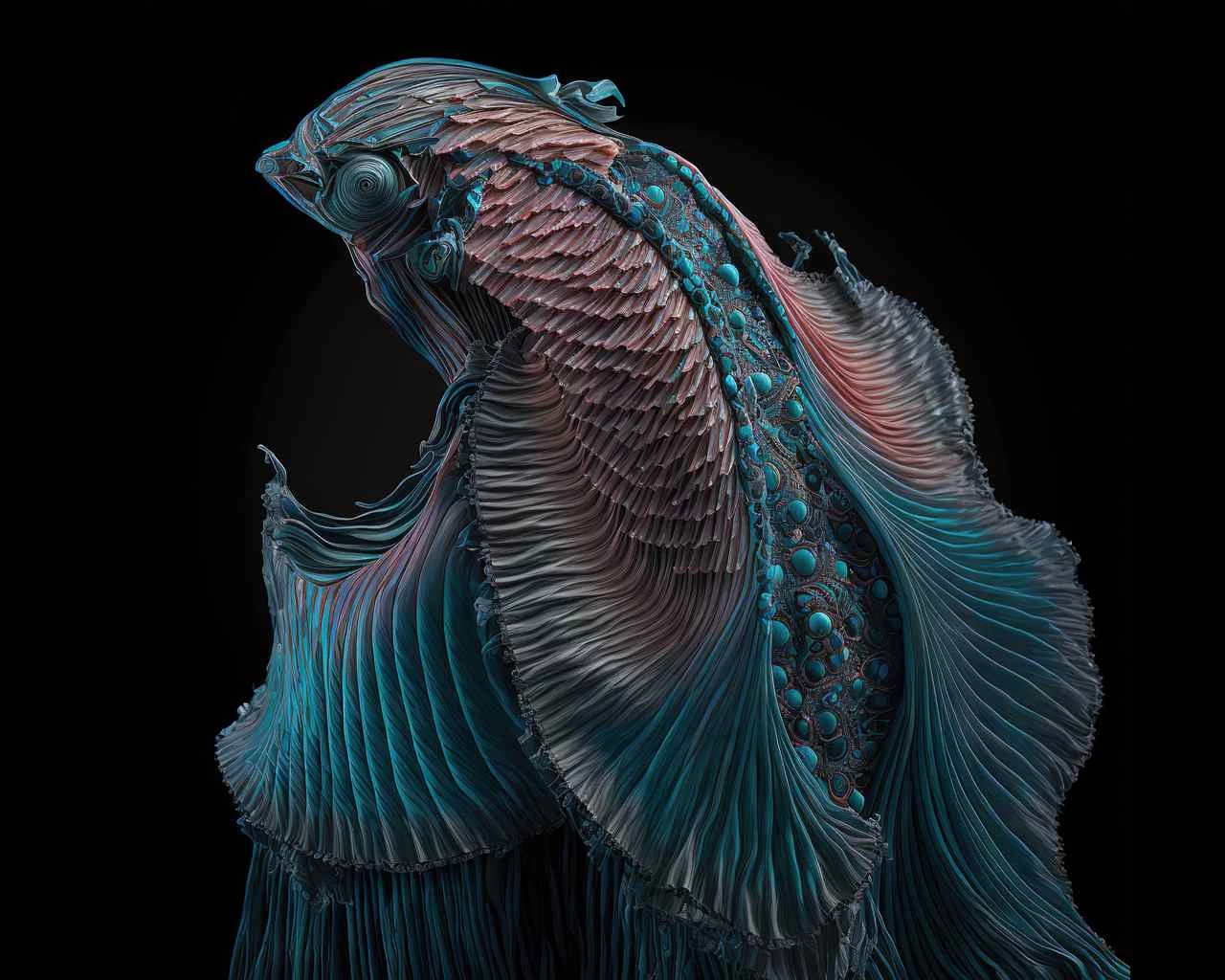
- Date
- 09 AUGUST 2023
- Author
- YIGIN ZHU
- Image by
- BARIS GENCEL
- Categories
- Interviews
Exploring the Frontiers of Art & Photography with Generative AI: A Conversation with Baris Gencel
One of the most fascinating aspects of this emerging trend is the way in which AI-generated arts are challenging our understanding of creativity and the role of the artist. As a forward-thinking magazine, RED-EYE is constantly searching for emerging talents who are redefining traditional art forms and pushing creative boundaries. One of the most fascinating and rapidly evolving areas in the art world is the integration of AI and other cutting-edge technologies in the creation of digital art. This has led to a wave of experimentation and innovation that is transforming the way we perceive and experience art. In this context, our interview with AI artist Baris Gencel offers a unique insight into the creative process of a trailblazing artist who is exploring the possibilities of AI-generated art, and the fascinating ways in which this technology is shaping the future of the art world.
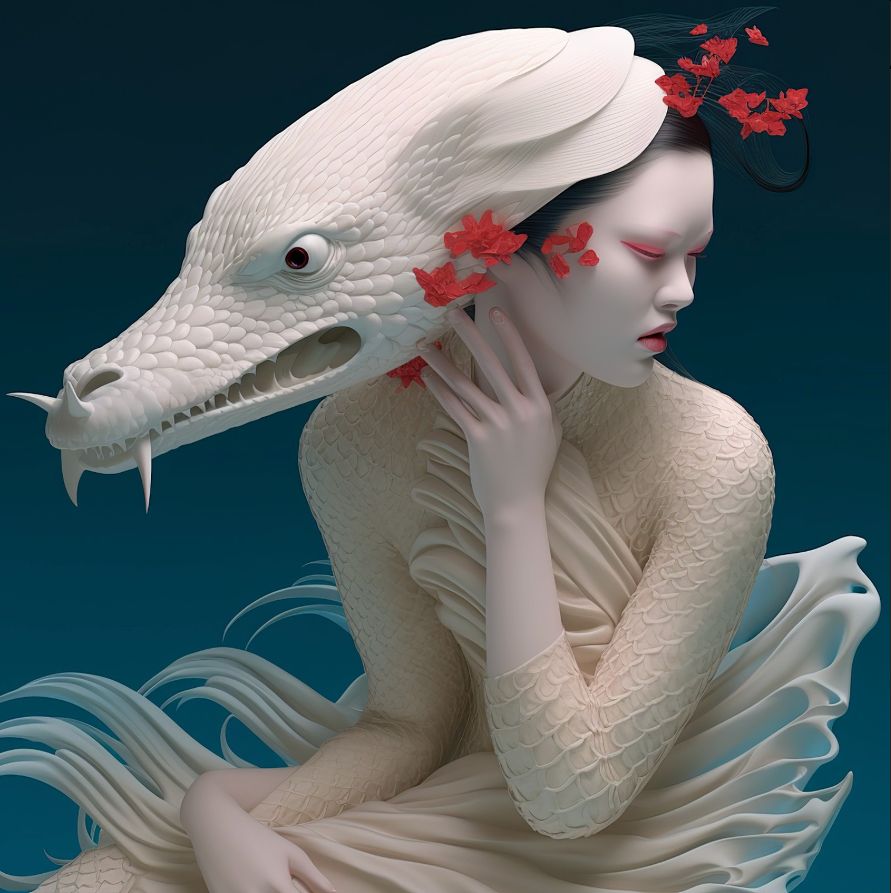
Can you tell us about your artistic background and how you came to work with AI?
Since I was kid, I was drawing, making things but my family did not want me to study art and I studied more on Branding Marketing so where I found my creative explosion started in the field of advertising as a creative director. I am Obsessively Curious Creative from Cyprus, I am obsessed with beauty and perfection in details.
I have been living in Asia for over 20 years and Industry call me Baris is a rare hybrid creative talent who keeps reinventing himself as a result of working seamlessly within the different areas ranging from Art, Video Content, New Media, Social, Digital, Experiential. I am also judged a wide range of categories for The Drum Experiential Advertising Awards, ADFEST Digital / Mobile / Lotus Campaign Effectiveness / Lotus Branded Entertainment Content, and International Film Festival.
AI is just an extension of what I have been doing. Without relying on others AI helping me to express my creativity. Sometimes also in commercial areas
As creative director, having access to AI generators is like having a art tools, and virtual talented designers at your disposal. With just a few taps, you can tap into the inspirations, each with their own unique style. This opens up a world of possibilities for creatives, allowing them to bring their concepts to life with ease.
So almost 18 hours a day I have been experimenting with this new tool since 2022 December.
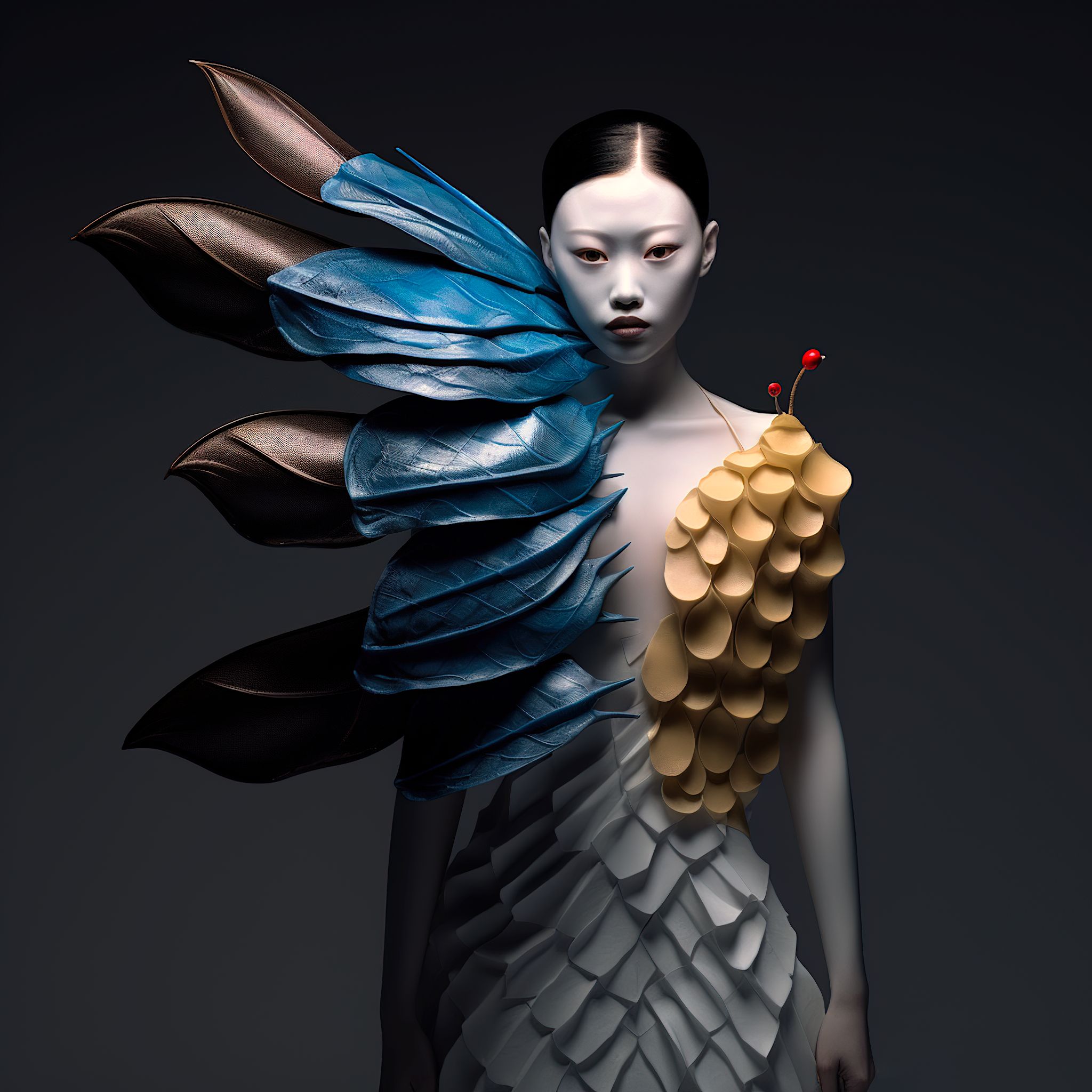
Can you tell us more about how do you approaching your artworks?
As an artist, I draw inspiration from a diverse range of sources. Inspiration can come from a variety of sources, such as personal experiences, emotions, cultural influences, and the world around us. As an artist, I draw inspiration from a diverse range of sources. For example, I find inspiration in the beauty and complexity of nature, such as the intricate patterns of flowers and the movements of animals and insects.
In addition to nature and the cosmos, I also find inspiration in other forms of art, such as music and literature, as well as in architecture and design. My past experiences and involvement in various creative fields, such as film-making, commercial photography, product design, and immersive installations, have also influenced my creative vision and style. Overall, I believe that inspiration can come from anywhere and everywhere, and as an artist, it's important to be open to all forms of inspiration and to allow them to inform and enrich one's creative process.
And another point is the quality and quantity of the input data is critical to the output of generative AI algorithms. Therefore, artists must have a wide range of diverse and unusual inputs to expand the range of possibilities and outcomes generated by the algorithm. The artist's ability to manipulate and curate the input is also essential in achieving the desired results. It's crucial for artists to have a wide knowledge base to approach input selection and curation thoughtfully and intentionally. This involves considering factors such as diversity, relevance, and uniqueness.
Good taste is also an essential factor for artists working with generative AI. While AI algorithms can generate a wide range of visuals, it's up to the artist to curate and select the most interesting and relevant ones that align with their artistic vision. This involves selecting the best results generated by the algorithm and providing creative and art direction to ensure the final artwork meets their creative goals and objectives.
To create unique and innovative artwork with generative AI, artists must possess a strong sense of taste and a clear artistic vision to guide the use of generative AI algorithms. By combining the capabilities of AI with an artist's creativity and vision, it's possible to push the boundaries of what is possible in art, ultimately creating new and exciting forms of artistic expression that are both original and beautiful.
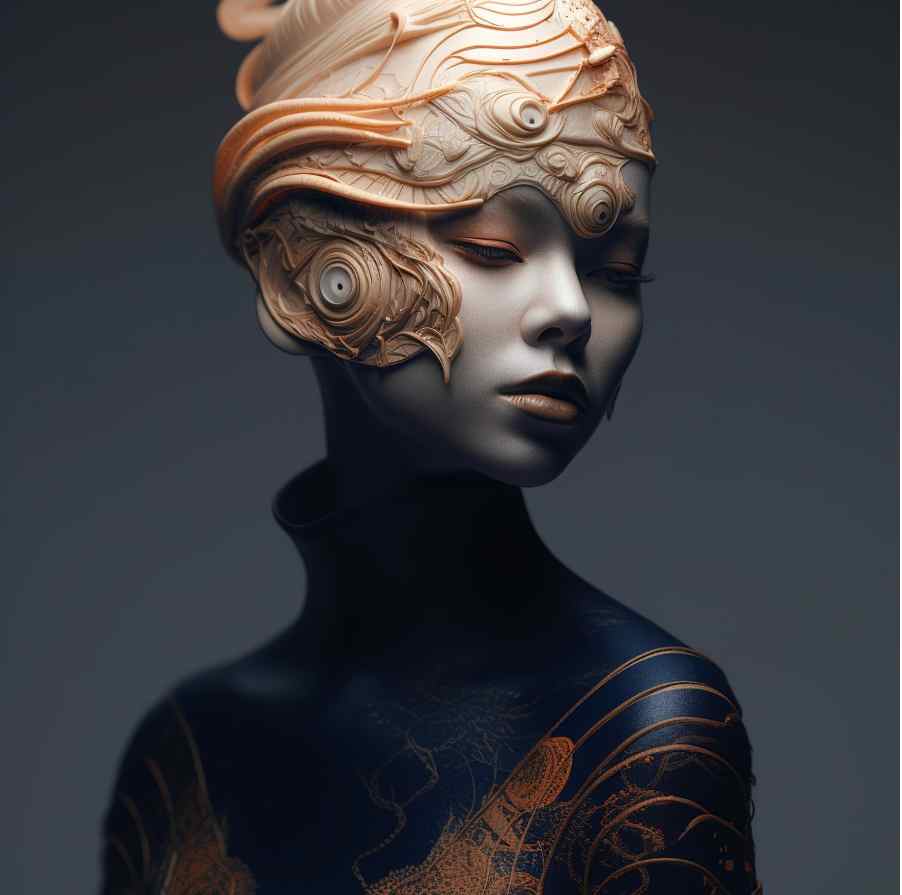
According to you, what are the advantages and challenges of using AI in art creation?
Working with AI has several advantages. Although AI cannot generate truly "new" ideas on its own, it can help artists explore new creative territories by generating unique and unpredictable combinations of known elements. This can lead to the creation of new and innovative artwork that pushes beyond the boundaries of what the artist can imagine. AI can also provide new tools, perspectives, and opportunities for exploration, expanding an artist's creative toolkit and enabling them to create new and exciting forms of art.
Working with generative AI has been a positive experience for me as a creative director and artist. The combination of my high speed of thinking and imagination, along with my good taste, and the speed of generative AI algorithms, has enabled me to create stunning artwork in a shorter amount of time. By utilizing the power of AI to generate new combinations and variations of known elements, I am able to explore new artistic territories and create unique and innovative works of art. Moreover, the speed and efficiency of generative AI saves time and effort that would otherwise be spent using traditional tools or software, allowing me to focus more on the creative process and bring my artistic vision to life.
Meanwhile, one of the main challenges is ensuring that the output aligns with the artist's creative vision and taste. While AI algorithms can generate a wide range of visuals and ideas, the artist needs to curate and select the most interesting and relevant ones that align with their artistic goals. This requires a strong sense of taste and a clear artistic vision to guide the use of generative AI algorithms and create artwork that is truly unique and compelling. Advantage or challenge not sure but it is selecting the right input data to ensure that the algorithm generates meaningful and relevant output. The quality and quantity of the input data and the artist's ability to manipulate and curate it play a crucial role in determining the outcome. Therefore, it's essential for artists to have a wide range of knowledge across various domains and to approach input selection and curation thoughtfully and intentionally, considering factors such as diversity, relevance, and uniqueness to achieve the desired results.
But While AI can be a powerful tool for generating new and unexpected results, it can also produce outcomes that are unpredictable and difficult to control. As an artist, it's important to recognize that the use of generative AI involves a degree of relinquishing control over the final output, as the AI algorithm is ultimately making creative decisions based on the input data and its own learning. This can be both exciting and challenging, as artists need to find a balance between guiding the AI to produce results that align with their artistic vision, while also being open to unexpected and surprising outcomes that can inspire new ideas and directions.
If the outcomes generated by the generative AI algorithms do not fully align with the artist's creative vision and objectives, they can be edited and refined using other software tools like Photoshop. This allows the artist to have greater control over the final outcome and ensure that the artwork meets their standards of quality and aesthetics. However, it's important to note that the use of additional software may also add to the time and effort required to complete the artwork.
Lastly, I would like to say as with any new tool or technology, there is a learning curve associated with working with Generative AI. Artists must invest time and effort in understanding how to use the tool effectively and creatively. This requires a willingness to experiment and explore new techniques and approaches, as well as a willingness to embrace the unexpected and incorporate it into their creative process.
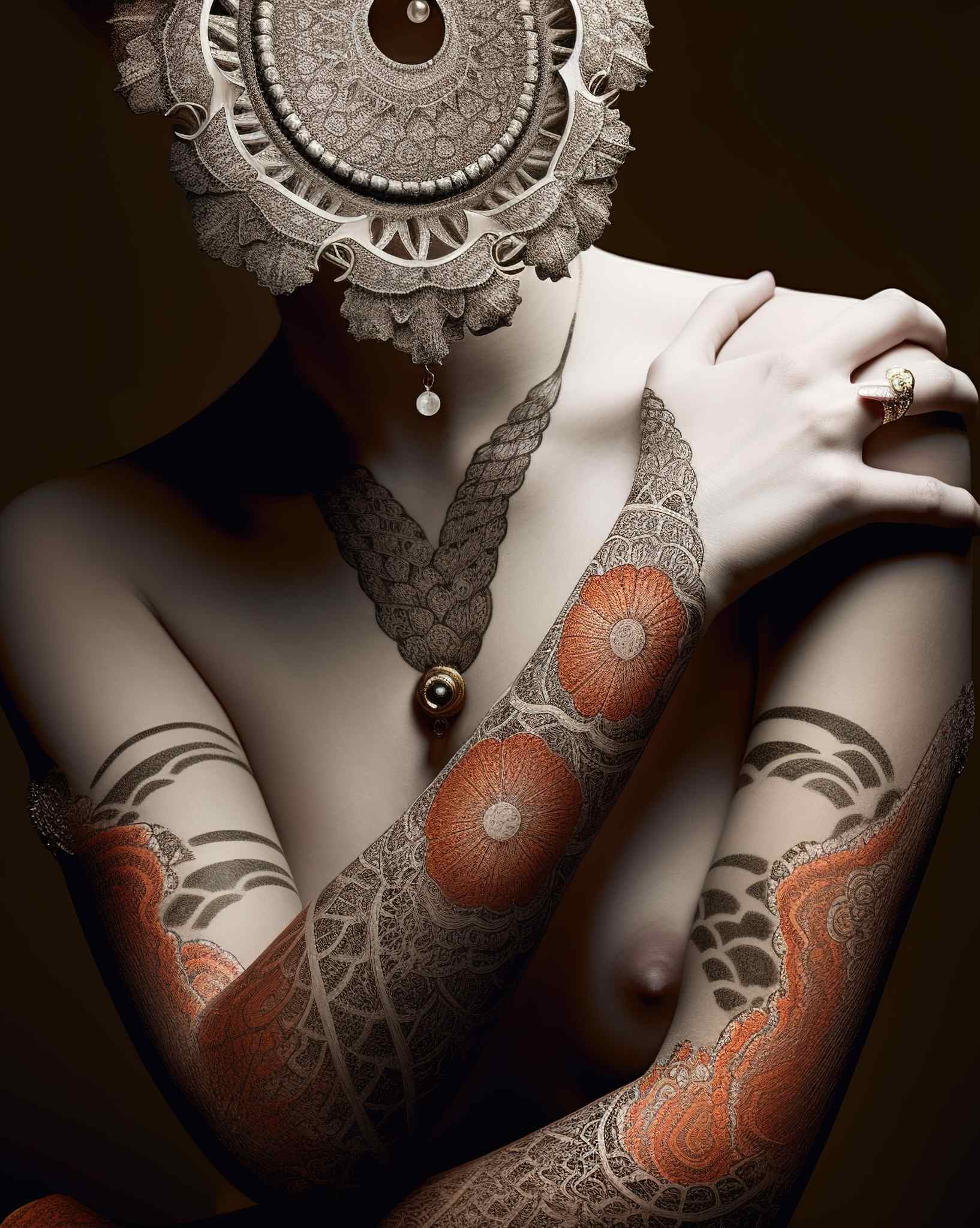
I saw you have created a lot of amazing photography by AI. Do you think AI will end the photography? or replace?
AI can offer a lot of opportunities in terms of creating photography works without the need for traditional materials and equipment. It can help create images that are difficult or impossible to achieve with traditional photography methods, and can also offer a more efficient and cost-effective way of creating images. However, it's important to note that AI cannot replace the artistry and creativity that goes into traditional photography, and that there will always be a place for both AI-generated and traditional photographic works in the art world.
But AI can certainly assist with photography or create, it's unlikely to completely replace it. Photography has been a respected art form for over a century, and it continues to evolve with new technologies and techniques. AI may offer new ways of approaching photography.
For example lets think about the introduction of the camera didn't kill painting. Instead, it led to new styles and techniques as artists sought to differentiate themselves from the realistic depictions offered by photography. Similarly, the use of AI in photography may lead to new forms of expression and experimentation, but it's unlikely to completely replace traditional photography.
The invention of photography in the 19th century had a significant impact on the art world and influenced the development of new artistic movements, including Impressionism. Many artists felt that photography had made traditional painting and portraiture obsolete, as it was able to capture realistic images more accurately and quickly. In response, artists began to experiment with new techniques and styles, focusing on capturing the mood and impression of a moment rather than a literal representation. Similarly, the rise of generative AI in photography may inspire new artistic approaches and techniques, but it is unlikely to replace traditional photography altogether.
My collection-Seductive Emanations was showcased in Monaco MEWS- Metaverse Entertainment Worlds Monaco 2023. AI photography work depicting oriental Arabic vibes, sexy beauty, and jewelry. It has a mystical quality to it and implies a sense of alluring energy.
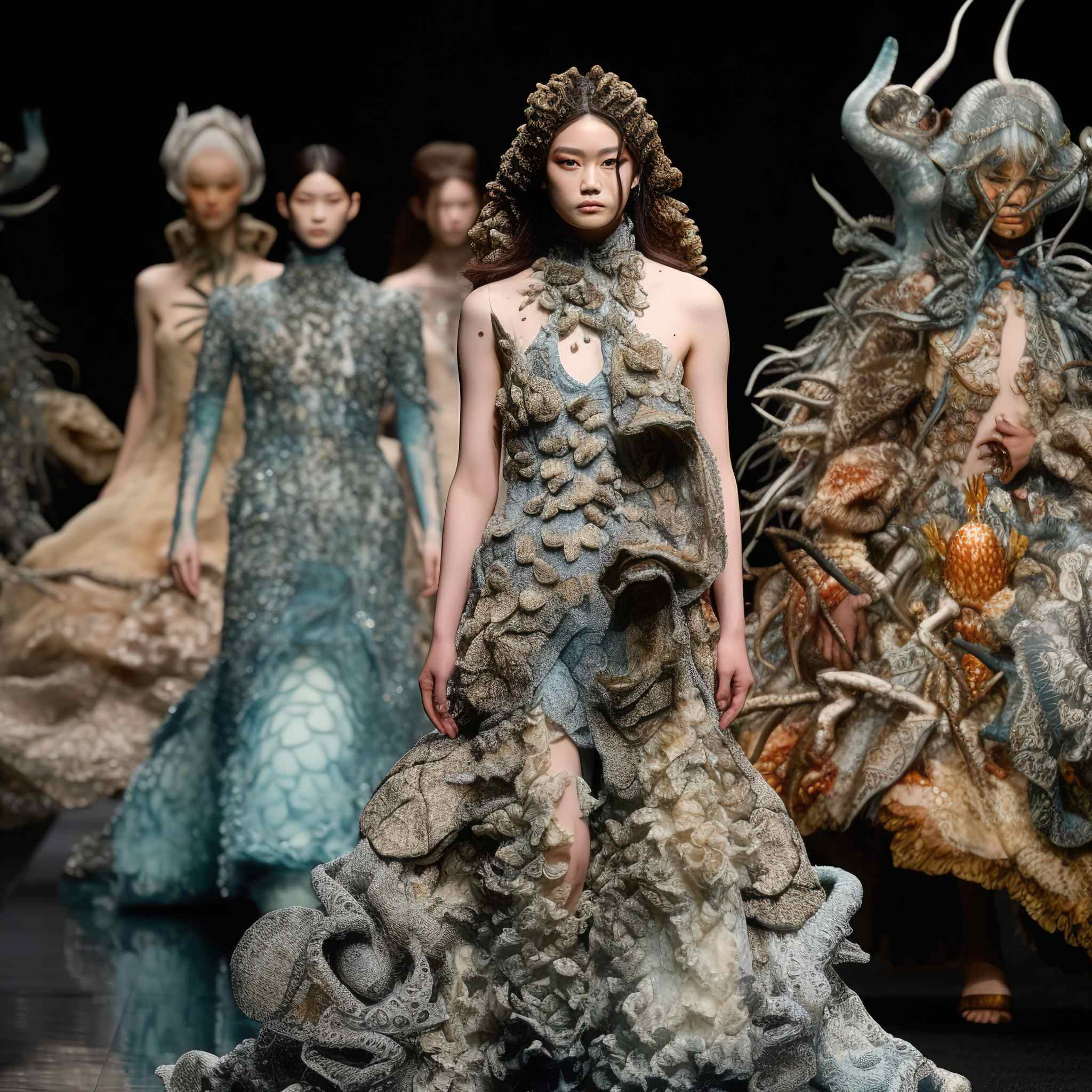
What are your thoughts on the intersection of AI digital art? Do you see AI-generated art as a new art movement?
AI is a tool, like any other tool you need creativity to use it. As an Artist I find this tool is a great tool to create digital art. This is my great answer to your question. I emphasize the fact that AI is just another tool available to artists, and like any tool, it requires creativity and skill to use effectively. It does not diminish the artist's contribution or creativity, but rather adds another layer of complexity and possibilities to the artistic process.
The idea that Ai art is not an art is total tosh. We had similar arguments during raise of computer software, CG art and NFTs. While AI technology may assist with the creation of art, the artist is still the one in control of the process. The use of AI does not diminish the creativity, skill, or vision of the artist.
Just like traditional art-making tools such as brushes and paints, AI is simply another tool that can be utilized by artists to create their art. It is up to the artist to decide how they want to use the technology and incorporate it into their creative process.
AlsoTII, the use of AI in art can actually open up new creative possibilities and allow artists to explore new techniques and styles that were not previously possible. Therefore, artists who use AI are still artists, and their work should be judged based on its artistic merit, not the tools used to create it.
Ultimately, it is the artistic vision and skill of the artist that creates a truly unique and meaningful piece of art, regardless of the tools used to create it.
Q6: In your opinion, how do you think the use of AI in art will evolve and develop in the future?
I think generative AI can make a significant impact in the future of art. In digital art, generative AI can help create entirely new styles and techniques that have never been seen before, pushing the boundaries of what is possible with traditional art-making tools. In photography, generative AI can assist with image enhancement, manipulation, and generation, creating unique and visually striking images that can't be achieved through traditional means.
Also in story telling is great tool to visualize our imagination, visualize our stories and also inspire for stories that never imagined before and it will be exciting to see how artists continue to utilize this technology in new and creative ways. I am doing it and I am happy with it.
The field of art created with AI is constantly evolving, and there are many frontiers that could be explored in the future. Another area that is currently gaining momentum is the use of AI to create interactive and immersive artworks that engage the viewer in new and exciting ways. This could include using AI to generate real-time visuals or sounds based on the viewer's input or movement, creating personalized art experiences that are unique to each individual.
Another area of potential growth is the use of AI to create art that explores complex social and cultural issues, such as identity, race, and gender. AI could be used to analyze large amounts of data and generate visual representations of patterns and trends that are difficult for humans to perceive, leading to new insights and perspectives on these important issues.
I think I can confidently say that, in future AI could be used to create art that is truly collaborative, with humans and machines working together to produce works that neither could have created on their own. This could involve using AI to generate initial ideas or elements, which are then refined and curated by human artists to create a final piece that is truly unique and innovative.
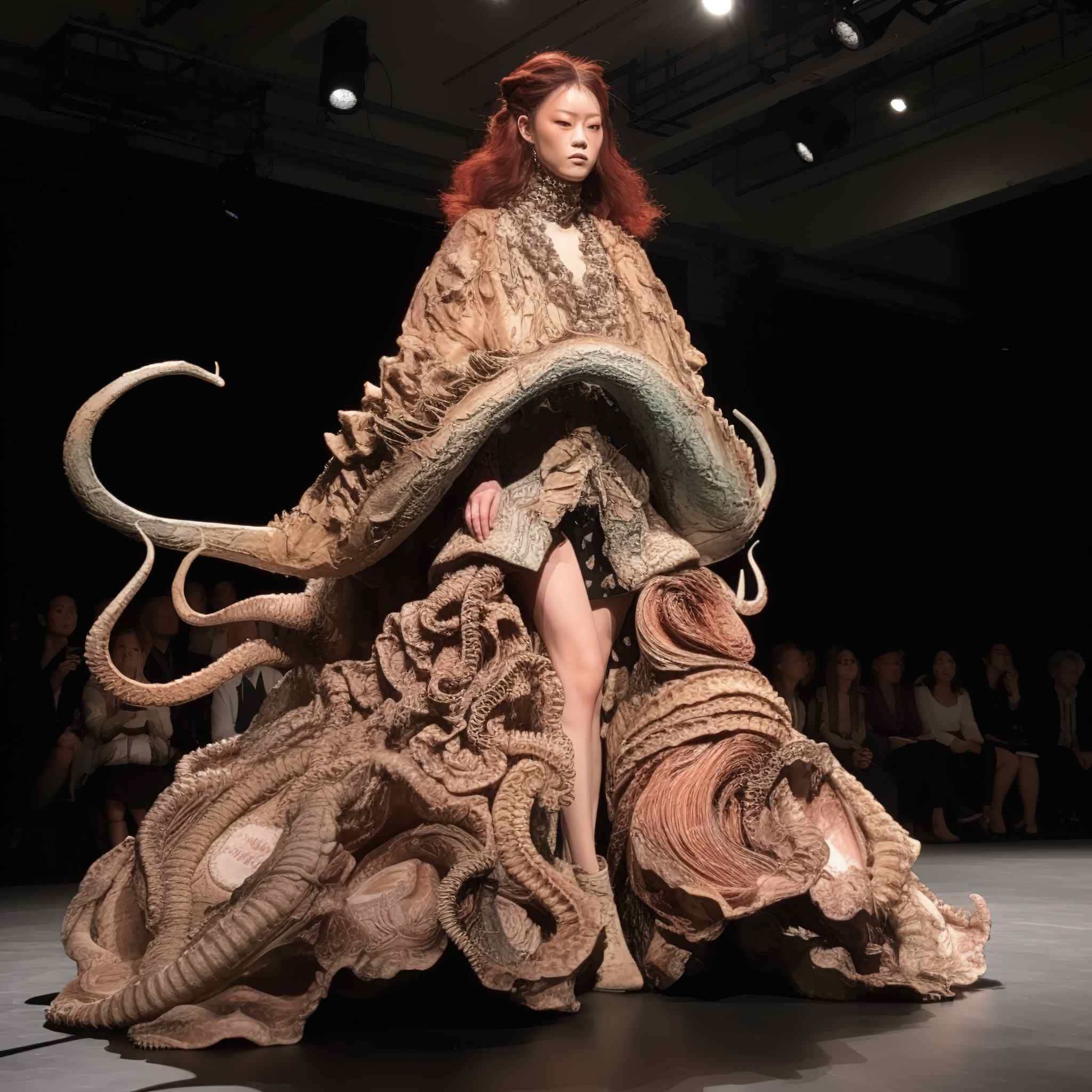
What role do you see AI playing in the future of fashion design?
AI is an essential tool for fashion designers in today's fast-paced digital world. As a creative director with years of experience working with designers and different types of talents, I have found that AI can help tackle problems that previously seemed insurmountable.
AI is a versatile tool that can help designers achieve their creative vision with speed and efficiency.
One of the key advantages of AI is that it can create endless variations of a design based on a few initial parameters. This allows designers to explore a range of possibilities and arrive at the best solution. Also AI can help designers optimize their designs based on various factors such as fit, material usage, and sustainability.
AI has a significant role in creating digital twins, which are virtual representations of physical products. With AI, designers can create detailed and realistic digital twins, allowing them to visualize their designs in ways that were previously impossible. This can help designers make informed decisions about their designs and identify potential issues before they arise.
AI is an important tool for designers to achieve their creative vision efficiently and explore a wider range of possibilities. By embracing AI, designers can stay ahead of the curve and push the boundaries of what is possible in the world of design.
And I participated in the first AI-generated fashion week. It was a community challenge by Maison Meta / AI Fashion Week where we asked to create runway, collections, and street images of the same fashion styles. It was challenging to create seamlessly consistent products, dresses, accessories but also was challenge to display them on runway and in different settings with only generative AI tools.
There were 350 submissions and 3 of the winners given chance to turn these AI generated visuals into actual dress with a coloration of fashion brand.
The possibilities for generative AI in the field of art are endless, and it will be exciting to see how artists and designers continue to push the boundaries and explore new territories in the years to come.
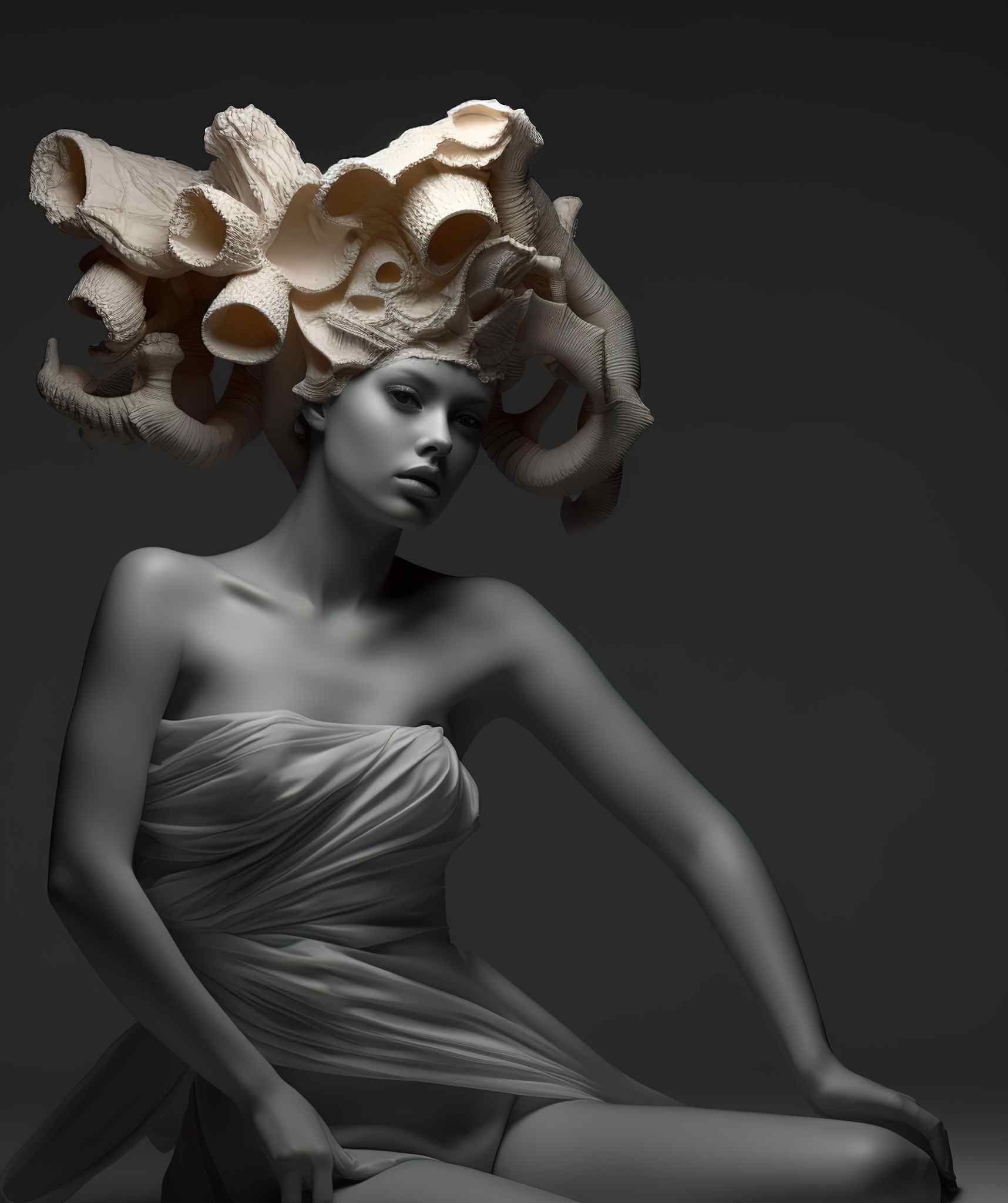
Can you tell us more about any particular pieces or projects that you would like to highlight and share with us?
First time generative AI arts on physical exhibition across six locations with K11 in China and Hong Kong. Siamese fighting fish Artwork Collection: Metamorphosis Siamese Fighting Fish
This collection showcases a series of artworks that delve into the theme of human transformation into Siamese fighting fish, portraying a fusion of fish and human traits and emotions. As you immerse yourself in the beauty of these artworks, I invite you to reflect on the underlying message I seek to convey.
Through this collection, I aim to illustrate the metamorphosis of humans into Siamese fighting fish, capturing the intricate interplay between fish and human qualities. Yet, these artworks go beyond their aesthetic allure, carrying a profound message that warrants our attention.
I implore you to contemplate what would happen if we transformed into such creatures. Would we still cling to our posturing, our inflated sense of importance, and our misguided belief that we can exploit our planet and oceans without consequence?
As we ponder the possibility of inhabiting other worlds, let us not lose sight of the fact that Earth is our only home. Let us cherish and safeguard it, and strive to create a future where the magnificence and richness of our oceans can thrive for generations to come.
Each artwork in this collection is a unique expression of this metamorphosis, intended to raise awareness about our role in the destruction of nature and the oceans.
Interview by Yigin Zhu
Images courtesy of Baris Gencel